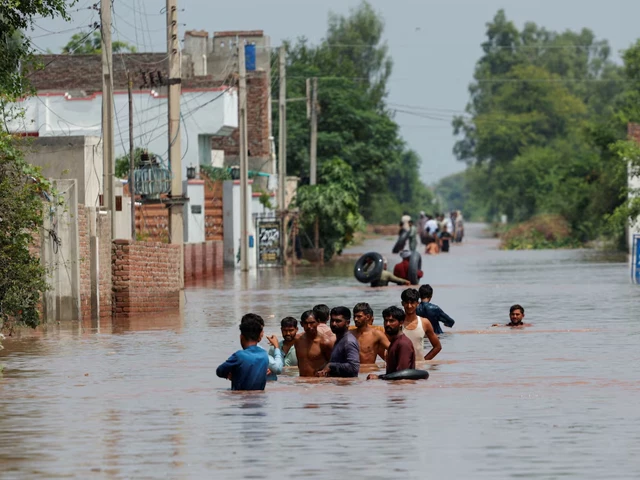The National Disaster Management Authority (NDMA) reported 16 deaths in the last two days, which has increased the toll to 831 in the last two months.
The floods, triggered by torrential rains and an excessive water discharge from India, have wreaked havoc, leaving thousands of brown and displaced people while causing serious damage to goods, infrastructure and ready crops.
Three cross -border rivers that crossed the Punjab, which borders India, inflated to exceptionally high levels, affecting more than 2,300 villages.
Learn more: The worst monsoon floods in decades leave millions of people displaced in Pakistan
According to NDMA, the hardest affected provinces are Khyber-Pakhtunkhwa (KP) with 480 deaths while Punjab reported 191 deaths. The Sindh recorded 58 deaths, Balutchistan 24, and Gilgit-Baltistan 41. The cashmere of the Azad reported 29 deaths, while Islamabad reported eight deaths. The children brought the weight of the disaster, with 219 minors among the deceased. The floods also cost the lives of 128 women and 484 men.
The impact on the country’s infrastructure was devastating, 238 washed bridges and 661 kilometers of submerged road networks. The floods also destroyed 9,000 houses and led to the loss of more than 6,000 animals.
More than 35,000 people have been moved due to the floods, many of which are now living in emergency camps. KP has the greatest number of individuals displaced to 26,000, followed by 6,000 in Punjab and 3,000 in Gilgit-Baltistan.
In response to the crisis, 1,880 rescue operations were carried out, saving more than 500,000 people. Among these, 485,000 were rescued in Punjab, while 14,000 were moved to safe and higher locations in KP. Emergency rescue efforts are continuing as the authorities are trying to help affected communities and mitigate the current disaster.
Also read: Kartarpur Gurdwara to reopen soon after catering work
The heavy rains have ravaged most parts of Pakistan with a forecast of heavier showers in the coming days. Friday, flood waters reached the periphery of Lahore and threatened to overwhelm Jhang in what is called the worst flood in almost 40 years in this region.
“The current rescue operation is the largest in the history of Punjab,” said Irfan Ali Khan, head of the provincial disaster management agency, while speaking during a press conference.
He revealed that more than 800 boats and 1,300 rescue staff were deployed to evacuate people, mainly rural areas along the banks of the three rivers.
The houses are partially submerged on the banks of the Ravi river flooded in Lahore on August 28, 2025. Photo: Reuters
The catastrophe follows a tragic sequence of calamities in mid-August, when the torrential rains sparked deadly KP landslides, killing more than 400 people in a few days. The province, located near Afghanistan, has faced additional challenges for rescue operations for various reasons.
In 2022, Pakistan endured the worst floods in its history, overwhelming a third of the country, the Sindh being the hardest. This year’s floods still highlight the growing vulnerability of the nation with increasingly serious impacts of climate change, with devastating consequences for lives and livelihoods.




